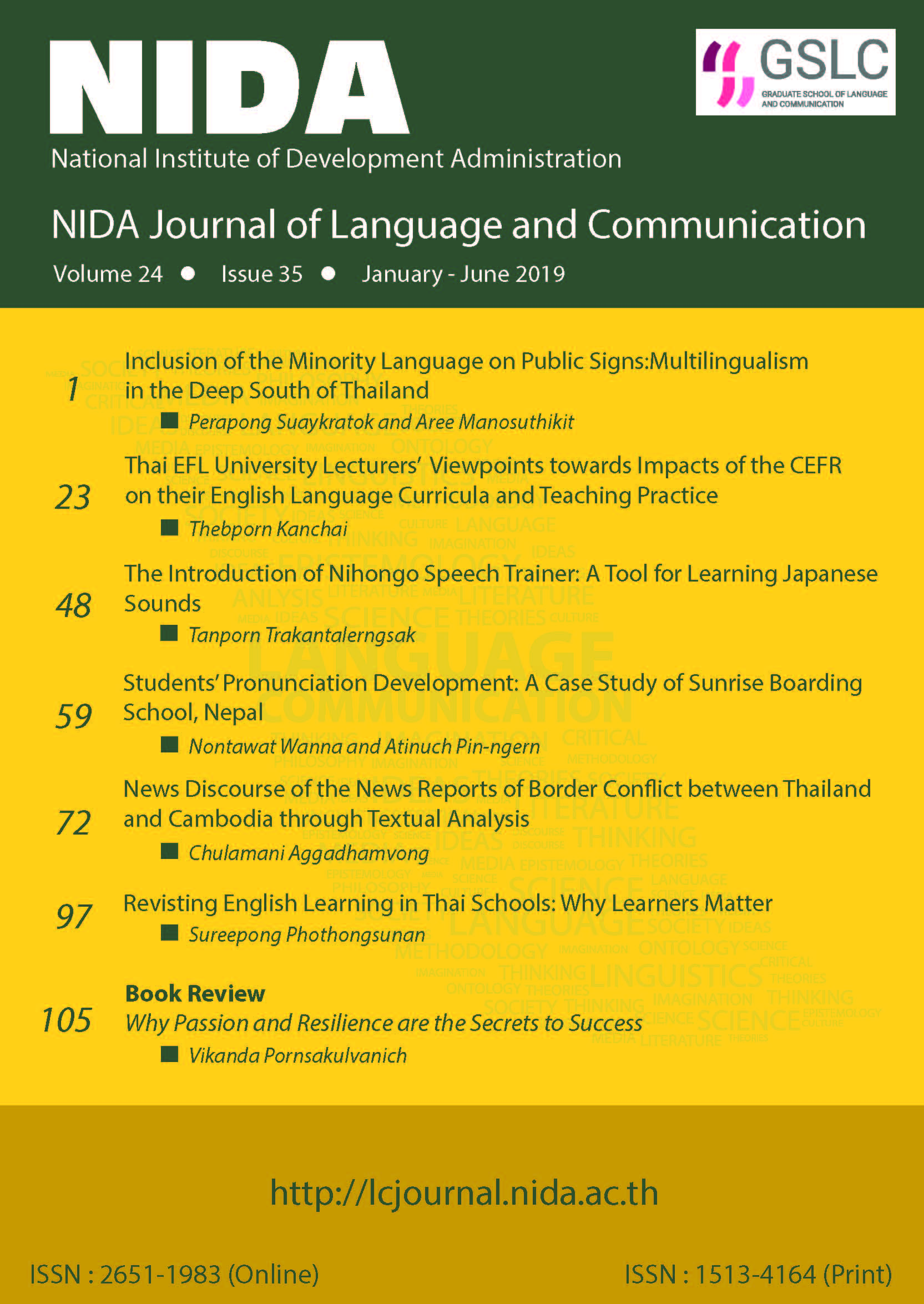Inclusion of the Minority Language on Public Signs: Multilingualism in the Deep South of Thailand
Keywords:
linguistic landscape (LL), multilingualism, minority language, linguistic policyAbstract
This study aims to investigate the linguistic landscape (LL) through signs
seen in the southernmost communities of Thailand with a specific focus on
Patani-Malay, a minority language, yet a mother tongue of the majority of people
in the regions. Six streets of each central city of Pattani, Yala and Narathiwat
were this study’s research locale where a variety of text signs were collected as
digital photos and were then coded based on: 1) the number of languages written
on the signs (monolingual, bilingual or multilingual); and 2) the types of signs
(official or private). The findings revealed that a number of languages (e.g., Thai,
English, Chinese, Bahasa Malay, Arabic, French, Japanese, and Patani-Malay)
could be detected on the signs on which a single language was most apparent.
More specifically, Patani-Malay is inclusively and mainly present on many
multilingual public signs along with other languages. Furthermore, through the
lens of the trend magnet model proposed by Lee (2015) and some other
sociolinguistic aspects, concepts of globalization, regionalization, nationalism
and localization should dictate that mentioned languages be placed on signs. This
study on multilingualism could shed light on and serve as the foundation for LL
studies in Thailand, especially in the southernmost contexts. Significantly,
multilingual concepts should also be made to extend the use of Patani-Malay in
wider range of domains of language use.
Downloads
Published
How to Cite
Issue
Section
License
By submitting a manuscript, the author transfers the copyright for the article to School of Language and Communication, National Institute of Development Administration (NIDA), if and when the manuscript is accepted for publication. Though the journal is an open-access, reproduction of any material published in NIDA Journal of Language and Communication for non-personal and/or commercial purpose requires a written permission from School of Language and Communication, National Institute of Development Administration (NIDA).






